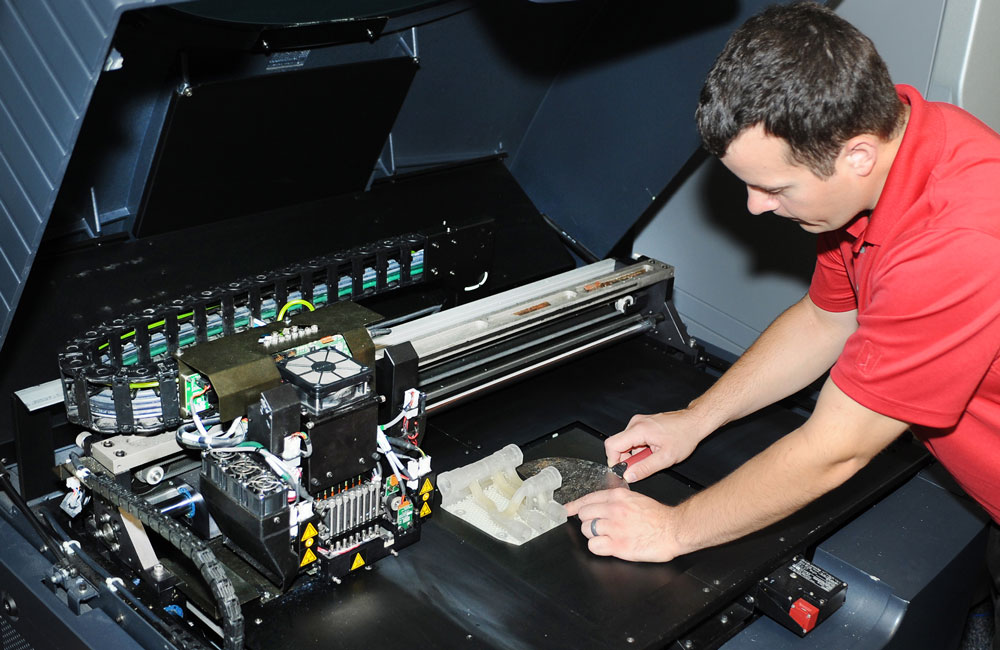COVID-19 Fostering AI Adoption Across Government
Cross-agency partnerships and remote collaboration tools are encouraging knowledge sharing and practical application.

Federal leaders are applying advanced analytics processes on large swaths of data using artificial intelligence in order to address public health matters like combatting fraud, waste and abuse and also the current COVID-19 pandemic.
“The world we’re living in today is based on information that’s coming at us so quickly at such large volumes that we can’t sit down and easily look at it in a spreadsheet,” said Veterans Affairs’ National Artificial Intelligence Center Director Gil Alterovitz during a GovernmentCIO Media & Research virtual event this week. “We have such a need for the assistance of computers to process that. It doesn’t mean computers themselves are making critical decisions, but it does mean we can use AI to make better decisions.”
Much of this is centered on using AI not to replace human inputs, but to better inform critical decisions in areas ranging from health diagnostic to fraud detection and prevention. This has led to AI development being closely tied to supporting agency missions.
The Department of Health and Human Services Office of Inspector General, for instance, used predictive analytics to support its law enforcement agents in their fraud detection efforts, ultimately leading to a case and a conviction.
“We found an opioid prescriber that had a high risk score in our predictive analytics,” said the department’s Chief Data Officer Caryl Brzymialkiewicz about the agency’s processes using automation to analyze Medicare claims data, which is more than one person could handle. “Ultimately the pill mill doctor was convicted on 16 counts of health care fraud and illegally dispensing drugs.”
At the VA whose focus is the veteran, it means learning from veterans the full potential of AI.
“When we think about priorities, we think about our mission and who we are here to serve. For us at the VA, it’s veterans. So what we want to do and have been doing is engaging veterans through activities working across different offices to understand what are their priorities, what are their concerns around AI,” Alterovitz said.
In discussing how the implementation of AI is changing across both the federal government and private industry, Acxiom Senior Director of Analytics Craig Wingate noted the increasing focus on both data curation and visualization models for better conveying insights to major stakeholders.
“Now there are 10 to 20 times more variables in our models, and there needs to be visualization techniques. And that’s what we’re accelerating — explaining and showing what the drivers are. Because if we can convince the clients — internal or external — that this is something that’s going to work and is not just some magic black box, then they’ll take it on and use it,” Wingate said.
The growing sophistication of AI capacities mixed with growing demand for their application has led to more comprehensive knowledge sharing across the federal government, particularly between institutions that engage in internal AI research.
“What we do is we go out and help our federal partners at the CIO level build and implement strategies to move to the next generation of AI. So it’s working with our industry partners and our government partners … to create these holistic packages and really trying to move from the past — which was relational databases — to non-relational databases,” said Anil Chaudhry, Director of AI Implementations at the GSA IT Modernization Centers of Excellence.
Chaudhry also noted that despite the mounting advances in AI capacities, integrating complex analytics within workflows and human decision-making remains an essential priority that determines the efficacy of AI technologies in practice.
“You realize it’s always a people, process and technology issue. The technology is the easiest problem to solve, so you have to start with the people. When I talk about AI, I describe AI as augmented intelligence, not artificial intelligence. Because the purpose of AI is to augment your workforce, not replace your workforce. So that’s the first hurdle that we go over,” Chaudhry said.
The challenges of the COVID-19 pandemic also appear to have accelerated AI knowledge-sharing across the federal government, particularly through the medium of digital collaboration tools that have become more commonplace during a period of near-universal remote work.
“This is really a transformational moment, and it has really changed the way a number of different people work together. It’s bringing together a number of different offices around a common cause, and I think that some of the things we’ve seen with COVID will translate into the future,” Alterovitz said.
“One of the things that we saw come up [in Colorado] was the need for understanding what our COVID [personal protective equipment] consumption was going to look like,” said NetApp Global Healthcare and Life Sciences Chief Data Officer Ray Deoitte, whose company created a ‘what if’ tool to provide better understanding around managing personal protective equipment supply and forecasting needs. “That’s the power of data.”
In looking both at the VA’s mission and the federal government more broadly, Alterovitz expressed confidence that this new era of AI collaboration will persist beyond the close of the pandemic and further encourage the application of complex analytics toward refining and improving the delivery of agency services.
“In a sense, we now know what’s possible,” he said. “That is leading to new processes and ways of thinking that I’m hopeful we can translate in the future into other areas beyond COVID as we develop AI to help veterans in other priority areas as well.”
This is a carousel with manually rotating slides. Use Next and Previous buttons to navigate or jump to a slide with the slide dots
-

CDC Updates Public Health Data Strategy
Accelerating data sharing through capabilities like electronic case reporting make up a large portion of the new two-year plan.
3m read -

Finalists Announced for Women Tech Leaders Flywheel Awards
The finalists for the Women Tech Leaders Flywheel Awards have been announced for the May 15 Women Tech Leaders Summit in Washington, D.C.
7m read -

Joint Navy-Air Force Simulator Expanding Digital Fighter Jet Training
A joint facility with the services wants to replicate its F-35 digital simulator technology across the Defense Department.
5m read -

Navy Invests in Additive Manufacturing Workforce to Match Pentagon Strategy
DOD issued its Additive Manufacturing Strategy in 2021 to integrate with the private sector and create agile uses of the technology.
5m read




